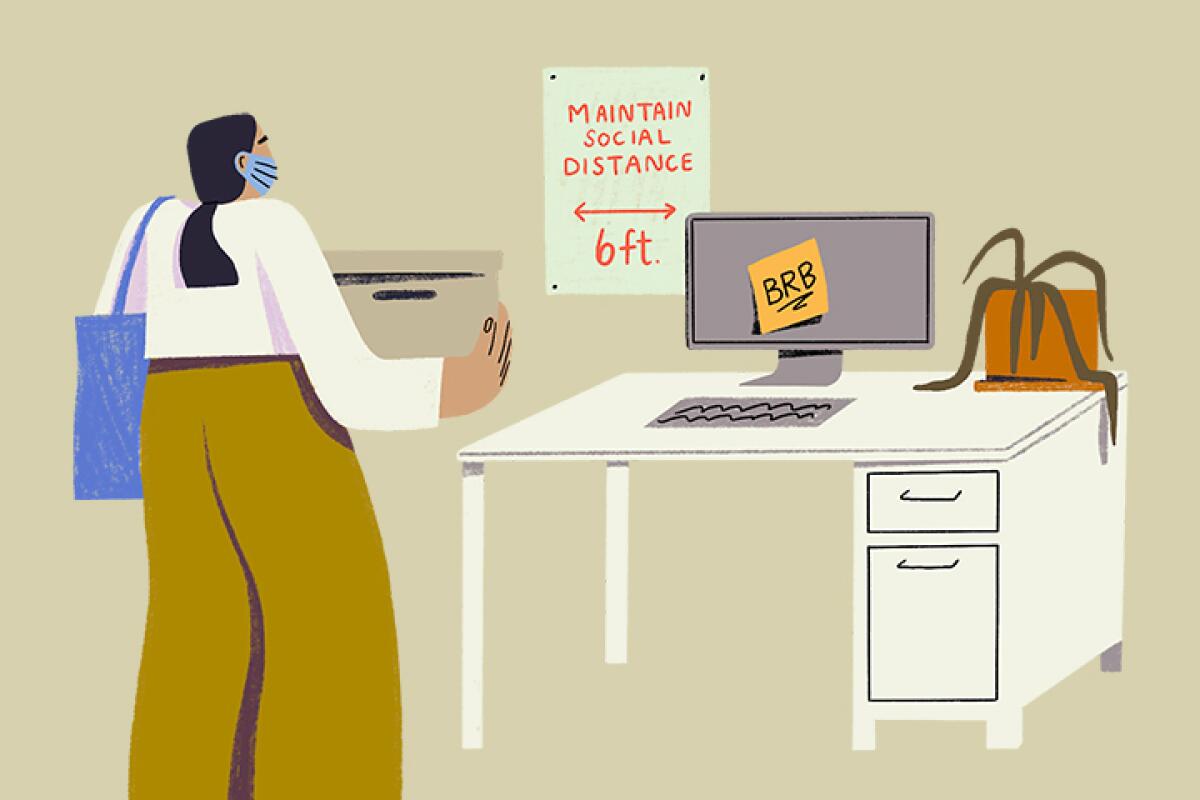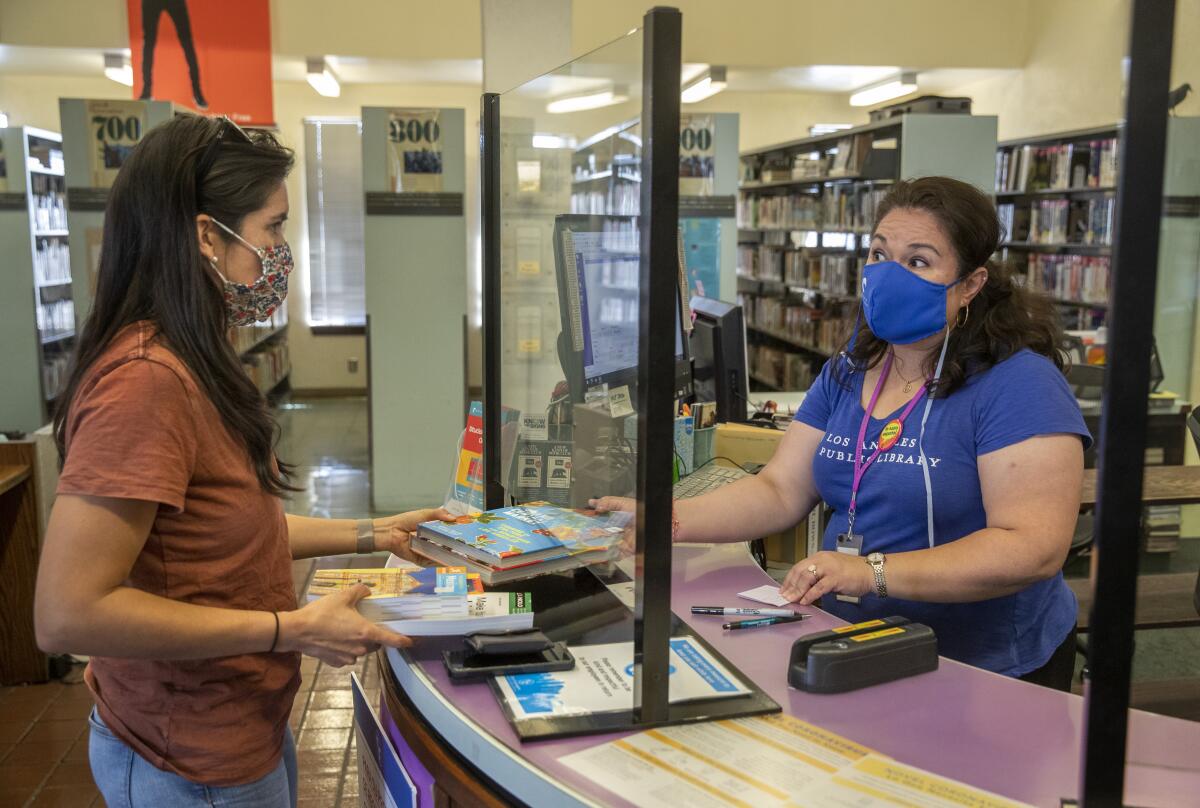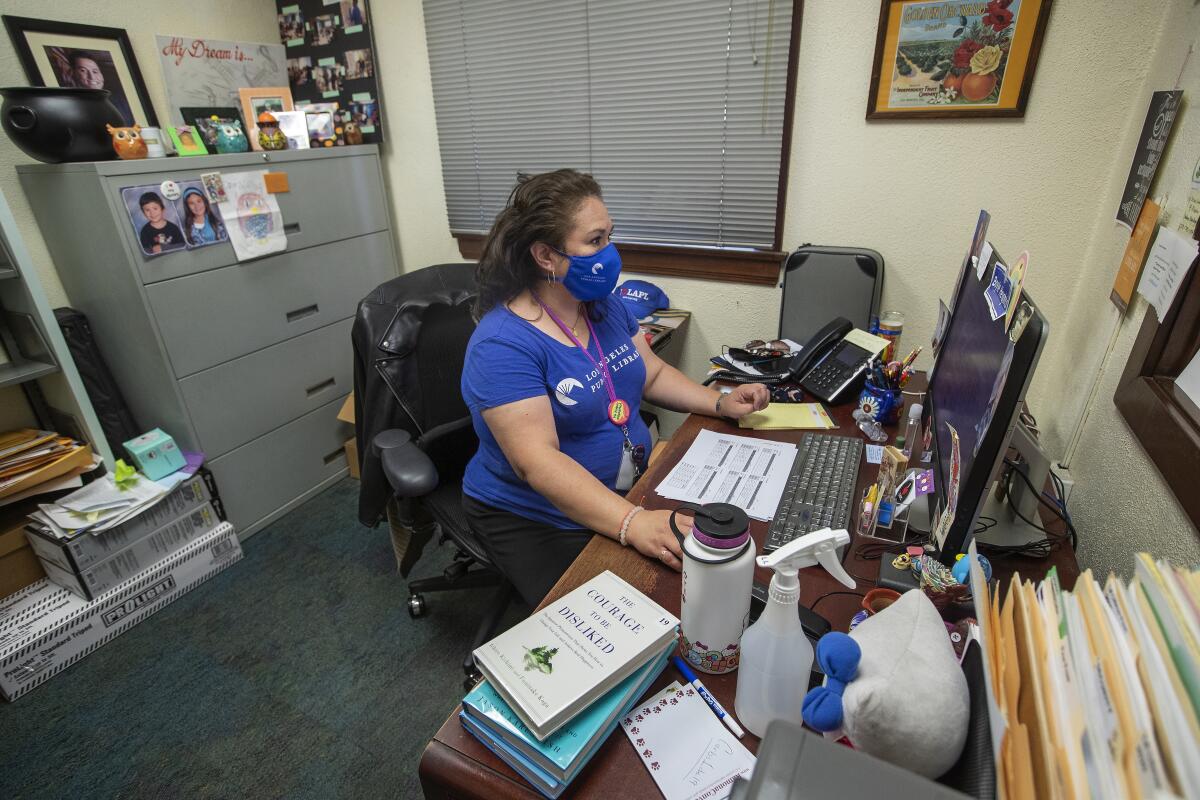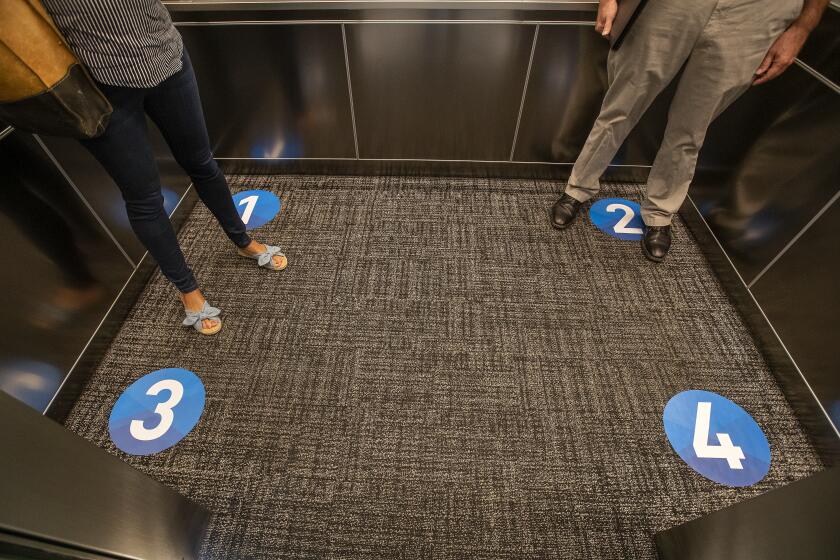The first day back at the office might feel weird. Really weird

- Share via
It wasn’t quite Pompeii, but it was close.
There, staring at Lupita Leyva on her first day back at work since the librarian hurriedly left her desk when the pandemic began, were old program fliers, stickers promoting the 2020 census and other artifacts from a time before the world changed.
The senior librarian at a Boyle Heights branch of the Los Angeles Public Library said she couldn’t help but have mixed feelings when she returned in April to prepare for the building’s reopening this month.
“It was exciting to come back, but at the same time it was a little bit painful because it really brought to mind the year that we lost when we weren’t there and weren’t able to do what we normally do,” said Leyva, 47. “I had stats and things on the census we planned to give out in the spring and summer. I go back and all of a sudden, 2020 is long gone.”
For those returning to work after spending a year Zooming from home, the experience is similar to that of students preparing for the first day of classes — it’s no sweat for some, but for others it’s enough to hatch a case of the butterflies, especially among those particularly anxious about COVID-19.
And with some workplaces closed while others operated with a core group of employees, it’s hard to know what exactly a return to the office will look like. That’s especially true as government regulations shift to reflect rising vaccination rates and as employers roll out new policies to lessen the risk of the coronavirus’ transmission.

Jessica Kubinec, managing director at the Los Angeles Review of Books, has been periodically popping into the publication’s small office on Sunset Boulevard to handle work errands, including making sure books sent by publishers aren’t overflowing. She has noticed a distinctly “stale” smell since the office isn’t filled with people milling around and opening and shutting doors.
She is typically by herself, but not long ago, she went in and didn’t realize Editor in Chief Boris Dralyuk was there. Her involuntary response hints at what some may feel once they emerge from the cocoon of their home office.
“We were both kind of like wide-eyed, looking at each other,” she said. “We were so far away from each other, but still, like, we don’t go in together.”
As COVID-19 recedes, California workers are being called back to the office. The office? Who remembers that place? And what will the return look like?
Paulo Acuña, a senior associate at Olmstead Williams Communications, an L.A. public relations agency, had a more formal return to work one day in April to complete a project with several employees, though he is otherwise still working from home. The experience was altogether strange.
“I can’t really decipher what it was like — if it was good or bad,” Acuña said. “It was weird. It’s been a long time since we’ve been together.”
Acuña was met with a large pile of subscriptions he decided to leave for another day. One thing he did do was keep his mask on, even though he could have closed the door to his office and taken it off. That wasn’t something he contemplated doing even though there were only a handful of workers in the office.
“I just prefer keeping the mask on at all times,” said Acuña, whose preference lands him on the safe side of conflicting federal, state and local mask guidelines regarding fully vaccinated people indoors.
The office beckons. What rights and protections do you have? Will safety and vaccine issues in the workplace prompt lawsuits?

Returning to the office means returning to things left untouched for months. That might include the office fridge, or leftovers that have become science experiments on the desk.
Emmett Shoemaker, an administrator at a West Los Angeles university he prefers not to publicly name, returned to work in late April, chastened by an experience he had while popping in to pick up some diplomas in the fall.
He opened his desk drawer to find a perfectly preserved apple — that is, until he picked it up and realized that in the cool darkness it had fermented to juice inside its skin. Now that he’s back at the office, he’s not touching the year-old food in the fridge. “I’m not going to explore those items because they’re not mine.”
With co-workers returning slowly last month, it was quiet with little “hygiene theater” by colleagues showing off how concerned they are about exposing others to virus particles on surfaces — a less likely conduit of COVID-19 infection.
Sitting at his desk, he admits, was a “surreal” experience. “I feel like we’ve all kind of experienced the strange elasticity of time. I just sort of immediately felt as if I was there a week ago. And, of course, it’s been over a year right now,” he said.
Of course, things are different.
Leyva said there have been some changes at her library branch, including translucent barriers at the service desk, medical-grade keyboards that can be disinfected, and socially distanced desks. The library also is limiting the number of patrons inside, while services such as story hour have not resumed.
“It’s bittersweet,” she said. “It’s sort of a roller coaster of emotions.”
Most people say they aren’t ready to give up working from home. Some bosses are looking at a hybrid model. Others are eager to bring workers back.
More to Read
Inside the business of entertainment
The Wide Shot brings you news, analysis and insights on everything from streaming wars to production — and what it all means for the future.
You may occasionally receive promotional content from the Los Angeles Times.













